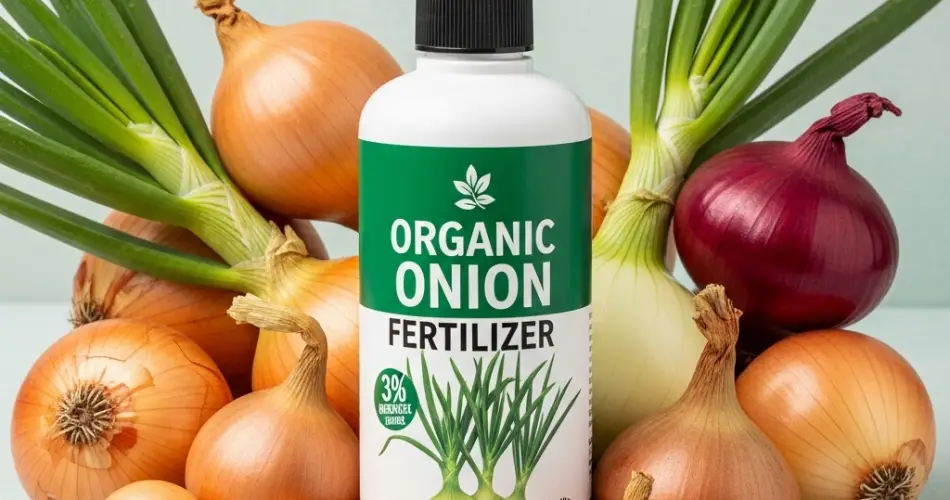What if the secret to healthier, more vibrant plants was already in your kitchen trash? Onion peels—often tossed without a second thought—are rich in nutrients that can significantly benefit your garden. These humble scraps, packed with minerals and plant-boosting properties, can be transformed into a powerful, all-natural fertilizer that improves soil health and enhances plant growth.
Rather than wasting these golden layers, you can turn onion peels into an easy, effective solution to feed your plants naturally. Here’s everything you need to know about using onion peel fertilizer in your garden.
Why Onion Peels Are Good for Plants
Onion skins are more than just kitchen waste. They contain a variety of nutrients and compounds beneficial to plant health, including:
-
Potassium: Essential for root development, flower formation, and overall plant strength.
-
Calcium: Supports strong cell walls and helps prevent common plant issues like blossom end rot.
-
Magnesium and Iron: Crucial for photosynthesis and chlorophyll production.
-
Antioxidants: Help boost plant immunity and improve resilience to stress.
These nutrients are slowly released into the soil when onion peels are used as fertilizer, feeding plants gradually and improving soil structure.
Benefits of Onion Peel Fertilizer
-
Improves soil fertility naturally
-
Promotes strong root development
-
Enhances flowering and fruiting
-
Boosts resistance to pests and diseases
-
Reduces kitchen waste through recycling
Whether you’re growing herbs in pots or tending a backyard vegetable garden, onion peel fertilizer is a low-cost, eco-friendly way to nourish your plants.
How to Make Onion Peel Fertilizer
There are several easy methods to turn onion peels into plant food. Here are the most effective ones you can try at home:
1. Onion Peel Tea (Liquid Fertilizer)
One of the most popular ways to use onion peels is by making a simple fertilizer tea.
What you’ll need:
-
A handful of dry onion peels
-
1 liter of water
-
A container with a lid
Steps:
-
Place the onion peels in the container.
-
Pour water over them and cover.
-
Let the mixture steep for 24 to 48 hours.
-
Strain the liquid and discard the solids (or compost them).
-
Use the onion peel tea to water your plants at the base.
Tip: Apply once a week during the growing season to help boost plant vitality.
2. Onion Peel Powder
If you prefer a dry fertilizer, you can make onion peel powder and store it for longer use.
Steps:
-
Collect and air-dry the onion skins until they are crisp.
-
Grind the dried peels into a fine powder using a blender or mortar and pestle.
-
Store in a sealed jar or container.
How to use: Sprinkle around the base of plants or mix with compost before applying to soil.
This method is ideal for potted plants and garden beds, as it offers a slow, consistent release of nutrients.
3. Add to Compost
Onion peels make a great addition to compost piles. They decompose easily and add valuable nutrients to the final compost mix.
Tips:
-
Mix with dry, carbon-rich materials like leaves or shredded paper.
-
Avoid adding large amounts of raw, fresh onion peels at once—they can attract pests or smell strong.
Over time, compost enriched with onion peels produces dark, nutrient-rich soil perfect for vegetables, flowers, and herbs.
Best Plants for Onion Peel Fertilizer
Many plants benefit from the nutrients in onion peels, especially those that require potassium for flowering or fruit production:
-
Tomatoes
-
Peppers
-
Cucumbers
-
Roses
-
Zinnias
-
Basil and leafy herbs
Avoid using onion fertilizer directly on very young seedlings or acid-loving plants like blueberries, which prefer more specialized soil conditions.
Additional Tips for Success
-
Store peels properly: Keep a small container in the kitchen for collecting peels throughout the week. Dry them if you plan to store for longer.
-
Use in moderation: While onion peels are natural, too much can cause nutrient imbalance. Stick to weekly or bi-weekly applications.
-
Combine with other scraps: For a more balanced DIY fertilizer, mix onion peels with banana peels, eggshells, or used tea leaves.
A Simple Solution for Sustainable Gardening
Using onion peels as fertilizer is a perfect example of how sustainable gardening can be both easy and effective. Instead of contributing to food waste, you’re turning leftovers into nutrient-rich plant food that supports growth from root to flower.
This eco-conscious practice benefits your plants, your soil, and the environment—all without spending a cent on store-bought fertilizers.



